
For 1967, Plymouth got into the midsize Supercar game by installing the big Super Commando 440 engine in the intermediate Plymouth Belvedere, creating a muscular new high-performance model called GTX. Car Life tested the Plymouth GTX in March 1967 and dubbed it a “Supercar bargain,” although they were dismayed by its poor build quality.
Car Life began:
AN EXAMINATION of the specifications for the Plymouth GTX reveals, at the outset, what should be an ideal vehicle for the sophisticated, sometimes car enthusiast. Muscular 440-cu. in. V-8 engine, taut-shifting and controllable automatic transmission, unitized and firmly sprung 116-in. chassis and hardtop coupe body with all-vinyl upholstering and bucket seat interior add up to the very archetype of today’s Supercar fleet.
Supercars, by CAR LIFE definition, are those which scale less than 12 lb. curb weight per rated horsepower. In general, they are a very specialized sort of automobile aimed at enticing the enthusiast buyer. They all include engines of 300-plus bhp. chassis of the intermediate or smaller category, and suspension characteristics somewhat altered from those of standard similar models.
The GTX wasn’t technically Chrysler-Plymouth Division’s first foray into the midsize muscle car realm. Even if we set aside the question of how the downsized 1962 cars should be classified, the 1965 and 1966 B-body Plymouth Belvedere/Satellite had been offered with the 426 wedge engine, and the street version of the 426 Hemi engine became available in 1966 for a hefty $907.60.

However, as Pontiac had demonstrated with the class-leading GTO, “enticing the enthusiast buyer” was at least as much about marketing as actual performance. The GTO was a package, with a name and identity buyers could recognize and Pontiac could promote.
In this area, Chrysler Corporation had an advantage that their rivals at General Motors did not. GM corporate policy limited the engine displacement of midsize cars to a nominal 400 cubic inches, and even that was a grudging adjustment to the original 1964 limit of 330 cubic inches, a rule Pontiac had bent to offer the original GTO. Chrysler wasn’t bound by such limitations, so its divisions could — and did — offer cars with engines as big as the chassis and market would bear.

Aside from the potential marketing advantages, Car Life noted that a mildly tuned big engine had many advantages, including the ability “to lug about town without incurring problems of fouled plugs, overheating, and frequent gear-changing,” and less cost than more high-strung performance engines. They remarked:
These virtues must have been exceptionally clear to Chrysler-Plymouth product planners when they laid out those specifications for their 1967 Supercar representative. Their major item of development was the big engine: other components were already at hand, awaiting assemblage into the specific package. Even the package had some precedent: Plymouth’s Satellite hardtop and convertible were de luxe versions of the Belvedere standard car line, dressed up to fit them to the burgeoning public taste for plushly outfitted automobiles.
FOR THE basic engine, the planners had only to reach into the Chrysler bin where the 440-cu. in. V-8 was being used to power the larger corporate products. Some warming-up was called for, and carefully accomplished. to better suit the engine to the intended customer. However, the concept of a mildly tuned, slow turning, big-muscle engine was retained.
The 426 Hemi, which was available on the new GTX and similar Dodge Coronet R/T, was neither mildly tuned nor slow-turning, but the Hemi was an expensive option: Hemi GTX production for 1967 was only 720 cars (plus a round dozen non-GTX Belvedere and Satellite models), while Hemi Coronet R/T production totaled just 283 cars. Car Life had already tested Mopar B-bodies with the Hemi (and had been suitably impressed), so their concern here was with the new high-performance 440 engine, standard in the GTX and R/T.

Chrysler-Plymouth was upfront about the intended target for the new 440 engine: The 1967 dealer data book proclaimed it “GTX … Great Tiger Exterminator!” in obvious reference to the Pontiac “GTO Tiger” marketing theme. Car Life explained:
An extension of the corporation’s “B” series, it follows displacement steps of 361, 383, 413 and 426 cu. in. Of these, only the 383 and 440 now are being produced. The 426 forms the basis for the hemispherical head street/racing engine series. The 383 and 440 are similar in design, but the 440 (and 426) utilizes a decked block, i.e., a block with additional cylinder height to accommodate a longer stroke. Interestingly, the 383 and basic 440 cylinder heads are interchangeable. though obviously the hemispherical heads are not; however, the hemi-head engine could be enlarged to 440 cu. in. with a 0.07-in. cut by the boring bar.
I’m going to presume here that most CC readers are generally familiar with the big Chrysler wedge-head “B” and “RB” engines and skip ahead to CL‘s discussion of the high-performance version:
In application to the various car lines, the 440 actually has three separate stages of tune with the two most powerful stages being virtually identical. Only exhaust system and air cleaner differences separate the version used in the GTX (and Dodge R/T and Charger) from that used in the Plymouth Fury, Dodge Polara and Monaco, and Chrysler lines; both are rated at 375 bhp at 4600 rpm, where the basic 440 (available only in Fury, Polara and Chrysler) has only 350 bhp at 4400 rpm. Incidentally, the HP 440 engine is called “Super Commando 440” for Plymouth installation, “Magnum 440” for Dodges, and “440 TNT” for Chryslers.
Differences between the basic and HP versions of the 440 are concentrated in the improvement of the breathing abilities for increased volumetric efficiency. Both engines have 10.1:1 compression, identical 2.08-in. intake valves and similar 4-barrel carburetion. Revised camshaft and valve train, exhaust manifolding and low-restriction intake air cleaner all contribute to the extra 25 bhp. The cam profiles are hotter than those for the basic 440, designed for higher lift, longer duration and greater overlap.
Making HTML tables is a PITA and the valve timing specs for the 440 are readily available elsewhere, so I’ll also skip over the camshaft profile summary, except to note that while the cam for the HP 440 engine was warmer than the standard 440, it was still mild compared to really hot street engines like the contemporary Pontiac Ram Air engines.

It nonetheless had good breathing for such a big engine:
Chrysler-Plymouth engineers found during 440 series development work that the engine was particularly responsive to increases in exhaust valve duration and lift. The specifications reflect those increases with a definitely longer duration exhaust profile. The exhaust valve is larger, too, 1.76 in. vs. 1.60 in. in the basic 440. Stiffer valve springs with surge dampers are used to raise valve float 200 rpm above that of the basic 440 and to accommodate the higher accelerations of the warmer camshaft.
The hot 440 engine had a Carter AFB four-barrel carburetor, which was the source of some trouble with the test car. Car Life was based in Los Angeles, so most of their 1966–1967 test cars had California exhaust emissions controls. For Chrysler, this meant the “Cleaner Air Package,” which included, among other things, a modified carburetor with leaner mixture settings and vacuum- rather than mechanically controlled secondary throttle valves. Car Life noted:
In driving the GTX, CL testers noted several disconcerting carburetion idiosyncrasies. At medium speed, 40-45 mph. the engine showed a predilection for “float,” that is, to vascillate [sic] from one rpm level to another without a change in pressure on the throttle pedal. At 60-70 mph this developed into a definite surging effect. Under low-gear, full-throttle acceleration conditions, engine power delivery suddenly stumbled above 4500 rpm, as if the carburetor were suffering from either surge or starvation conditions.
The caption of the illustration reads, “BIG ENGINE fills GTX underhood area with potential power. Careful attention to exhaust and intake flow, plus 440-cu. in. displacement, help deliver the 375 bhp.”

They continued their summation of the high-performance 440 engine:
Exhaust valve throat counterbore angle has been reduced from 25° to 15° to improve flow past the valve. The exhaust manifolds are low-restriction designs with free-flow passages and 2.38-in. outlets. The GTX muffler system is dual with 2.5-in. headpipes and 2.25-in. tailpipes. No resonators are used and the exhaust note is distinctly audible, though well within legal requirement.
Several other refinements have been made to the 440 for its GTX/High Performance role. The ignition systems utilize a double-breaker distributor rather than the single breaker of the basic 440. The oil pan incorporates a windage tray (from mid-model year on, as a running change) to prevent crankshaft rotation from whipping up oil mist which can cause excessive oil consumption.
To handle the extra power of the 440 engine, the B-body drivetrain was beefed up for GTX duty. This also allowed Chrysler-Plymouth to pull a disagreeable pricing trick: Although a four-speed manual transmission was a no-cost option on the GTX, in place of the standard TorqueFlite automatic, requesting the four-speed required you to also order the optional 9.75-inch Dana heavy-duty rear axle with 3.55 gears, a $138.90 option.

Chrysler engineers apparently considered the cushioning effect of the torque converter sufficient to make this unnecessary with TorqueFlite, so automatic cars normally had the 8.75-inch heavy-duty ring gears, with or without a Sure-Grip limited-slip differential ($37.60). It appears that the only axle ratio available with TorqueFlite was 3.23 — Chrysler’s various performance axle and “Track Pak” options were still in the future.

The GTX suspension was also reinforced:
Suspension is firmer for the GTX, with heavy-duty torsion bars, ball joints, rear leaf springs (six instead of five leaves) and the front anti-roll stabilizer bar (0.94 in. diameter) that is optional equipment for other Plymouths. The torsion bars are 0.92 in. diameter (normal Plymouth bars are 0.88 in.) and produce a ride rate (at the wheel) of 118 lb./in. where the standard models have 102 lb./in. The extra leaves in the rear springs give the GTX a ride rate of 159 vs. 115 lb./in. for other Belvederes. Additionally, the shock absorbers are recalibrated for firmer damping of jounce-rebound movement.
Curiously, there’s no actual discussion of the ride and handling of the test GTX, although it’s not hard to guess based on other contemporary midsize Mopar reviews. CL‘s subsequent test of a 1968 Road Runner with the same suspension and similar weight distribution was probably representative: little body lean; fairly heavy understeer that could be mitigated by applying more power; adequately quick but numb Chrysler power steering; and a stiff ride.

The 1967 GTX probably had less ultimate cornering power than later Mopar intermediates because of its narrower tires. Plymouth wouldn’t adopt Wide Oval or Wide Tread tires until 1968, so the GTX had to make do with 7.75-14 Red Streak nylon tires on 14 x 5.5K station wagon wheels.

(One of the reasons I chose the red car pictured in the color photos is that it has the original 14-inch Deluxe wheel covers rather than the now-obligatory Magnum 500 wheels.)
BRAKES FOR the GTX are borrowed from the Chrysler line; i.e. 11-in. drums with duo-servo shoes, power assisted if desired. These drums, with 3-in. shoes in front and 2.5-in. shoes at the rear, have a swept area of 380.1 sq. in. Shoe clearance setting is manual, rather than automatic by a self-adjusting mechanism. These brakes should be adequate for most average driving needs, though the enthusiastic type of driver probably will prefer the added safety margin of Chrysler’s optional, excellent disc/drum combination. This system, with power assist mandatory, replaces the 11-in. drum with 11.07-in., radially vented rotors at the front wheels, and with 10 x 2.5-in. drums at the rear. The front brakes have 4-piston calipers, two pistons powering 6.96-in. long pads on each side of the rotor. Though the disc/drum system increases total swept area to only 387.8 sq. in., the faster-cooling discs have greater resistance to fade and considerably less sensitivity to ambient conditions.
The discs were $69.00, plus $41.75 for the mandatory brake booster. You couldn’t order them with the chromed steel road wheels, presumably for clearance reasons.

Unfortunately, the test car’s front discs did not make for outstanding stopping ability:
In applying the standard 2-stop test to the GTX’s disc/drum system, CAR LIFE found the first deceleration only mediocre. Subsequent stops were in the 25–27 ft./sec./sec. range—clearly above average. One all-on stop from 100 mph, at the conclusion of the normal series, produced only 20ft./sec./sec. deceleration, and such a distressing lack of vacuum boost—it ran out as the car decelerated through the 50 mph range—that both feet were required on the brake pedal.
The booster run-out issue may have been a blessing in disguise: Early Chrysler power disc/drum setups tended to suffer premature rear lockup in hard stops due to poor front/rear proportioning.

Even with the mild 3.23 axle ratio, the 7.75-14 Red Streak tires were easily overcome by the 440 engine’s enormous torque:
Acceleration required a far more delicate touch on the throttle. With 375 bhp and 480 lb.-ft. of torque lurking beneath that innocent treadle, great care was required to achieve maximum-effort take-offs. Though adequate to most other needs, the tires were easily overwhelmed into useless wheelspin … Feather-footed starts, with the car just trickling off, gave the best acceleration times.

Here are some highlights of the Car Life performance results:
- 0 to 30 mph: 2.6 sec.
- 0 to 60 mph: 6.6 sec.
- 0 to 100 mph: 16.4 sec.
- Standing ¼-mile: 15.2 sec. at 97 mph
- Top speed: 120 mph at 5,000 rpm
- Test average fuel consumption: 12.3 mpg
You’ll notice that there’s a disparity between the quarter-mile elapsed time and the trap speed — most cars of this period that were capable of reaching 97 mph through the timing lights could complete the run in well under 15 seconds. It’s clear from the text that this was a traction issue: not enough tire grip to handle the torque, even with a 3.23 axle.
Still, the 440 was potentially a Hemi-killer on the street. Here’s how the GTX compared with the 1966 Plymouth Hemi Satellite Car Life had tested in July 1966, which also had TorqueFlite and a 3.23 axle:
| Acceleration | GTX | Hemi Satellite |
|---|---|---|
| 0–30 mph | 2.6 sec. | 2.9 sec. |
| 0–40 mph | 3.8 sec. | 4.2 sec. |
| 0–50 mph | 5.2 sec. | 5.4 sec. |
| 0–60 mph | 6.6 sec. | 7.1 sec. |
| 0–70 mph | 8.3 sec. | 8.8 sec. |
| 0–80 mph | 10.4 sec. | 10.7 sec. |
| 0–90 mph | 12.9 sec. | 13.0 sec. |
| 0–100 mph | 16.4 sec. | 15.8 sec. |
| Standing start ¼ mile | 15.2 sec. at 97 mph | 14.5 sec. at 95 mph |
| Passing, 30–70 mph | 5.7 sec. | 5.9 sec. |
That would be a close race, and the Hemi didn’t have the advantage until speeds reached the “spend the night in county jail” level. (The Hemi was handicapped more than the GTX by the relatively tall gearing, but it’s differences like that that make races.) On an actual racetrack, fully prepared for sanctioned competition, there was no arguing with the greater ultimate power of the 426 Hemi engine, but in the real world, the 440 GTX was cheaper, lighter, and easier to live with.
The photo caption reads, “BUCKET SEAT interior is all-vinyl finished, with heavily embossed seats and panels. Automatic transmission shift lever is up on column, leaving floor area clear.”

Although the Car Life car had a column shifter, nearly all the GTX survivors I could find with TorqueFlite had floor shifters with a center console, a $52.85 option the CL car didn’t have.

In the main, the editors thought the styling of the GTX seemed appropriately butch for its mission, with a few caveats:
Along with the outstanding mechanical features, the car has a tailored sort of no-nonsense styling which distinctly parts it from other, more rounded members of Supercar ilk. Because of a minimum of exterior decoration, an aggressive, compactly muscular image emerges. This aspect is heightened by the view from the driver’s bucket seat: Looking down that broad hood, between the window-dressing “scoops” and over the pointed, vertical hood ornament, the driver feels sharply inspired with the brute masculinity of the vehicle.
He may also find a few things not to like, such as the full-circle horn ring on the steering wheel, a surfeit of embossment on the all-vinyl interior, and, if the test vehicle is an example, poor construction quality.
The red car in the color photos has a semicircular horn ring, which eliminates the first problem, but I agree that the embossing on the vinyl upholstery — repeated both in vertical strips on the seats and on the doors and quarter panels — was a bit much. It reads to me as rather prissy for a Supercar, particularly with the red car’s white vinyl trim.

Here’s a detail shot from a different GTX with more subdued blue trim:

Car Life was less concerned with the test car’s lapses in taste than with its dismaying lapses in build quality. They explained:
Of far more serious consideration was the apparent quality of construction, though panel fit and painted surface conditions were quite acceptable. These were the defects CL found in what must be considered a new car, ready for delivery to a cash-in-hand customer:
- Creaking and groaning sounds were emitted from body joints in the left A-pillar/windshield header area whenever the body flexed.
- Power steering pump had a squealing, faulty shaft bearing; pump and fan drive belts were unnecessarily loose.
- Left door electric window lift would not work.
- Right door courtesy light switch would not break circuit.
- Clock light flickered on and off with vibrations and bumps.
- Right side wiper blade was bent out of line of proper windshield contact.
- Headlights were so far out of adjustment that high beams illuminated only 30 ft. in front of car.
- Front wheels definitely were out-of-balance despite presence of wheel weights on rims.
They acknowledged that a dealer would probably fix most of these problems under warranty, but felt that “such annoyances would hardly be conducive to sale of the vehicle, or customer satisfaction with it after purchase, no matter how impressive its performance.”
The photo caption reads, “PLYMOUTH CREATES a broad, flat trunk area by placing spare tire in a well below the floor. Fuel tank fills from side panel, also fits under trunk floor.”

Car Life concluded:
In most other respects, the GTX appears to be a bargain package. Its factory basic price is $3178, which includes the biggest engine in the smallest sedan chassis available today, either a TorqueFlite automatic or all-synchromesh 4-speed manual transmission, a bucket-seat-and-vinyl interior in a specially trimmed exterior, and a wealth of heavy-duty and HP equipment at no extra cost. The addition of power disc brakes, power steering and a few modest accessories add little enough to the overall cost and make it into one of the most responsive, comfortable handling domestic 1967 automobiles CAR LIFE has driven. There is a great deal of virtue in a big engine, particularly one of Chrysler Corporation’s big engines.
Given the level of performance it offered, the GTX was very reasonably priced (the CL test car’s as-tested price was $3,649, which included power steering, the power disc brakes, power windows, a radio, and tinted windows), and that, combined with the availability of the 426 Hemi, should have made it a winner, at least on paper. Instead, the GTX was an also-ran in the Supercar race, as was its Dodge sibling, the Coronet R/T.

Particularly in 1967, both the GTX and R/T offered more substance than style: Whatever one might think of the styling today, I don’t think contemporary buyers in this class were terribly impressed, and the fact that the low-line Plymouth Belvedere sedan was often seen in taxicab livery probably didn’t help. Compared to the 1967 GM A-bodies, the GTX was stodgy-looking. The 1968 restyling (below) was an improvement, but it now looked like a pastiche of last year’s GM cars, and the 1968 GTX now had strong internal competition from the Road Runner, which was cheaper and had a much stronger marketing image.

Chrysler-Plymouth raised the base price of the 1968 GTX to $3,355, probably to make more room for the Road Runner, but the GTX was still competitively priced. A Pontiac GTO was cheaper, but you paid $226.44 extra for a three-speed automatic (still standard on the GTX), and only the expensive Ram Air engine was a match for the Super Commando 440. A GTX was also a better performance value than a loaded Road Runner — the Road Runner wasn’t really a great deal unless you firmly resisted the allure of the options list.


However, the GTX was ultimately a commercial lost cause, as the numbers reveal:
Plymouth GTX Model Year Production, 1967–1971
- 1967: 12,690*
- 1968: 18,940
- 1969: 15,602
- 1970: 7,748
- 1971: 2,942
* Estimated based on dealer orders; Chrysler didn’t release separate GTX production totals for 1967.
From what I can tell, collector interest in the GTX now seems to center on Hemi cars, but for real-world use, the 440/TorqueFlite combination strikes me as more desirable, even if build quality was on the sloppy side.
Related Reading
Vintage Review: 1966 Plymouth 426 Hemi Satellite – The First 13 Second Street Machine (by Paul N)
Vintage Car Life Road Test: 1966 Plymouth Satellite 426 Hemi – King Kong Arrives, In A Blue Three Piece Suit (by Paul N)
Vintage Car Life Review: 1968 Plymouth Road Runner 383 – As Hot As It’s Been Made Out To Be? (by me)
Drag Strip Classics: Dog Dish Afternoon, Part I–1969 Chevy Nova 396 and 1969 Plymouth GTX (by Aaron65)









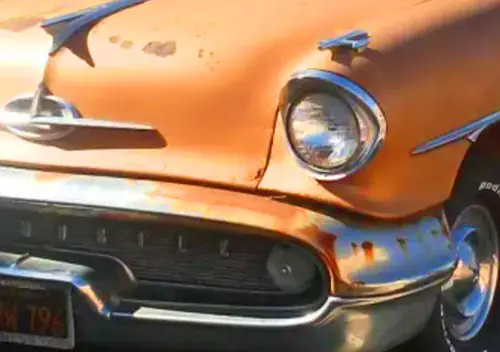
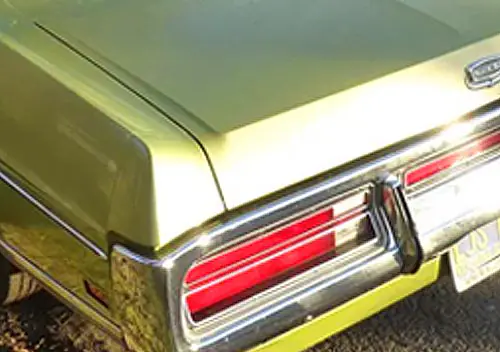



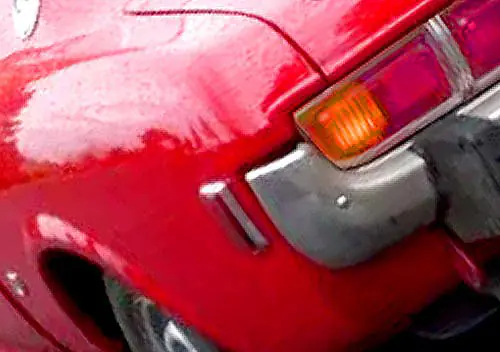

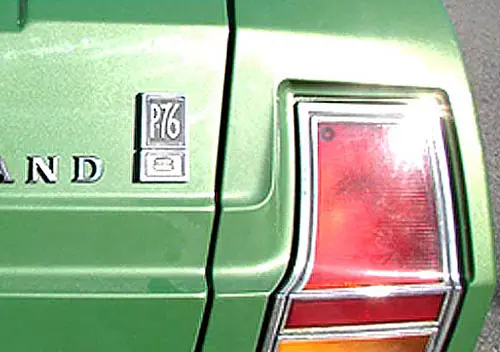
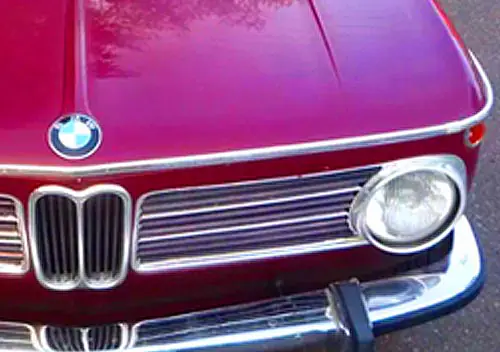


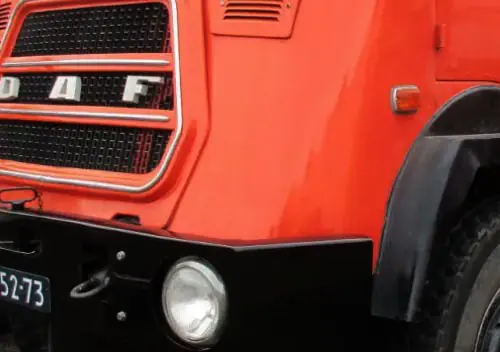
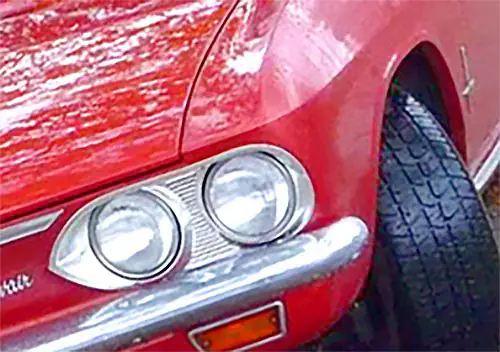
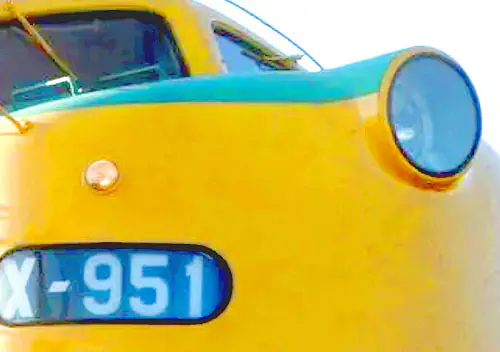
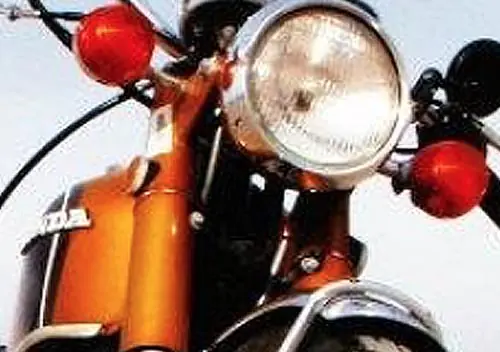
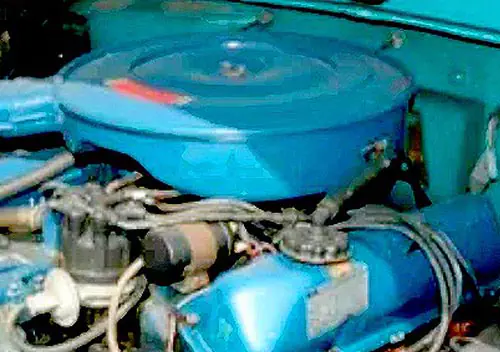



That’s a comprehensive review. I always thought these very handsome, a pretty straight laced design except for the unusual rear roof pillar.
In 2025 I’d pick the LA small block for daily driving. One of my former co workers has a 440 powered Belvedere and it’s extremely thirsty.
I’m with Doug – I always found these cars really attractive, but then as a kid I resisted the move to more fluid styling as the 1960’s went on. The mother of my sister’s best friend had a 66 Satellite convertible that I really loved, but she traded it before I hit driving age.
The embossed vinyl strips seemed to have been a thing for a short time in the mid 60’s. The Mustangs had the “pony interior” with embossed horses on the seats, and I remember similar embossed strips with a floral pattern in 66-67 big Fords.
Your comparison table of 440 v. Hemi performance squares with the story a friend’s father told me. He bought a new 68 Charger R/T with the 440, and one day got into an impromptu stoplight drag with a similar car with the Hemi. Howard told me that he had it in the bag until they he hit about 80, and after that the Hemi car just walked away from him.
Very nice review in both the CC writing and Car Life article. Typically, back in the day, magazine reviews were rife with errors and of little technical substance, but this one seems an exception with spot-on, accurate data.
As to the 1967 GTX, Chrysler still had yet to fully embrace the ‘copy GM’s last model cycle’ styling ethos, and the 1966-67 intermediates simply weren’t very attractive, with box-like, right-angle styling and the ‘pagoda’ roof still in vogue for Chrysler products.
And then there’s the low quality which the article refreshingly points out in detail. This was a rarity since the magazines depending on the manufacturers to supply cars for their articles, and such negativity could mean less access to the most appealing cars.
So, despite the GTX’s terrific performance value, they just didn’t sell all that well. It’s a pity because the biggest, big-block intermediates with a single 4-barrel carburetor were, indeed, the best compromise between driveability and the occasional straight-line acceleration runs. You really had to want (and pay for) the fastest cars with the most powerful engines since they were more maintenance intensive (solid-lifter cams, multiple carbs) and higher compression made them much less user-friendly for daily driving.
To that end, aside from appearance and build-quality, the 1967 GTX was ‘just right’. The fact that the test car had a column shift was, indeed, a rarity. As stated, I’ve never seen a GTX so equipped; every one I’ve ever seen had the extra-cost console.
I also like factory hubcaps or (full wheel discs) on older muscle cars.As it was how they were built back then.I also like white walls and redlines too.Today people will always put a Cragar or a factory rally wheel on an old muscle car whether it looks good or not.The factory hubcap is always the better look in my opinion.It’s the ultimate in originality.I have a “23 Challenger RT and in the winter I use the Charger steel police wheel in place of my factory aluminum wheels in order to keep the wheels from getting all corroded.And I use the factory full wheel hubcap over the steel police wheel as a little nod to all the muscle cars from the past.And it just happens to resemble a 5 spoke aluminum rim.It’s a win win in my book as it was all made by Mother Mopar.
At least that’s a GTX who didn’t end unlucky like the one in the movie Tommy Boy.
https://imcdb.org/vehicle_33896-Plymouth-Belvedere-GTX-1967.html
https://www.youtube.com/watch?v=U05y06ikKbI
I know, technically they used a regular Belvedere and a 1968 Chrysler Newport when the deer destroyed it as “stunt doubles”.
Excellent review and commentary on a watershed car. The GTX was an extremely compelling package let down by a few minor issues, taxicab styling being one of them.
It appears that the only axle ratio available with TorqueFlite was 3.23 — Chrysler’s various performance axle and “Track Pak” options were still in the future.
The “1967 Motion by Plymouth” brochure (dated March 1967) does list a number of higher numerical axle ratios available on TF equipped GTXs, but only as dealer supplied/installed parts.
These were pretty rare on the ground new so by my time in high school in the early 70s nobody drove a used one as opposed to all the other muscle cars in the parking lot. The styling on the Plymouth aged pretty well, I thought the Dodge front end was too angular.
Books by the Cars magazine staff (Oldham and Schorr) are good reads and they both say that they didn’t like the Mopars at all back then because of the build quality and cheap interiors. Today people restore them and fix all the bugs and people ask why didn’t they sell more because they drive great.
Thanks Aaron
BTW there was a pretty famous Hemi GTX that was a backdoor Mopar engineering project known as the Silver Bullet. King of Woodward Ave. Much info out there on it and it still exists.
The performance numbers jibe with Uncle Tony’s Garage YouTube videos about the Hemi and the similar Ford Boss 429. Both engines were originally intended for stock car racing so sustained high speed running was more important than acceleration, making the more conventional big blocks better off the line.I would even stick with a 4 barrel over a Six Pack on my 440 if the objective was winning stoplight drags.
It wasn’t just the Mopar 440. The single 4-barrel, hydraulic lifter versions of the biggest V8 engines from Ford and GM also struck the best balance between musclecar performance and day-to-day use.
How did they justify NOT using self-adjusting brakes–technology that wasn’t new even then? I wonder if the description of the brakes is in error.
Wasn’t the “Unibody” construction supposed to reduce body flex and the attendant rattles ‘n’ squeaks?
The Dana 60 axle–about the same in terms of overall strength as the GM 9.5″ semi-float 3/4-ton truck axle. The Chrysler “eight and three-quarter” was a fine unit, too.
The 10-inch drums used on lesser Belvedere/Satellite models were self-adjusting, but the AMA specifications say the oversize 11-inch police-option brakes used on the GTX and Hemi cars were not, and note, “With non-self-adjusting drum brakes, adjust shoe clearance according to service manual.”
My first car was a 67 Pkymouth Belvedere ll Hardtop! A simple çar with a small V,-8, 273,, auto Trans and that’s it. No Power Steering or Power Brakes. Great Plymouth Cars, 69 was the Best for all of Chrysler. Carburetors, Poor Steering and Drum Brakes made driving a challenge. RIP Plymouth and Lee Iococca!!!
My father has one .and its one BAD ASS RIDE.HE WANTS TO SELL IT.ALONG WITH ALOT OF HEMI PARTS.CAR HAS ALL STRIP MILES.NO STREET MILES.CHECK IT OUT.PEACE